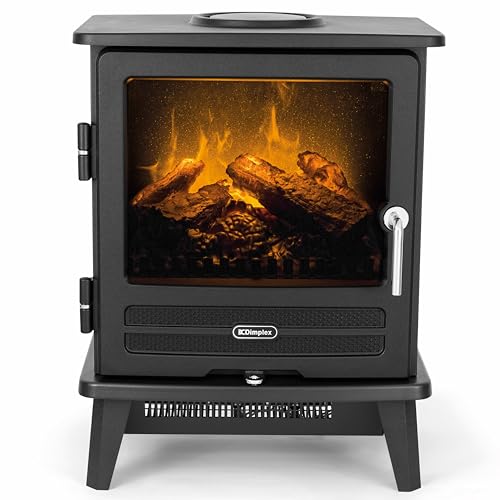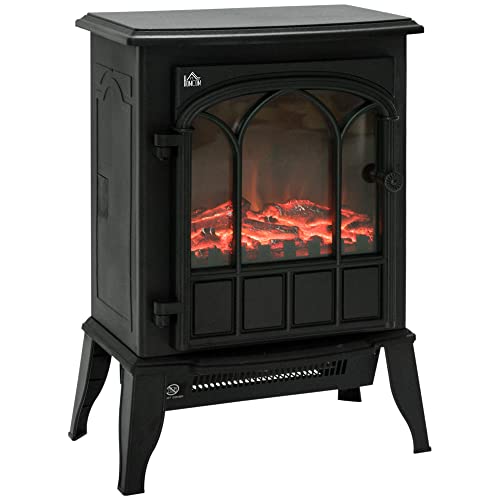5 Killer Quora Answers On Electric Heater
페이지 정보
작성자 … 작성일 24-12-28 09:10 조회 7 댓글 0본문
 What You Need to Know About an Electric Heater
What You Need to Know About an Electric HeaterElectric heaters are an excellent way to provide a quick burst of warmth when needed. They are usually measured based on the size of the room and come with features like thermostats, an overheat switch and timers.
An electric heater converts electrical energy into heat through the use of joules to heat. The heating element is made up of nichrome wire, which is supported by ceramic insulators.
Resistor
The resistor is an electrical element that blocks the flow of electricity in a circuit by cutting down its voltage and absorption of some of it as heat. It converts electrical energy into thermal, wasting just 1 watt. This process is found in a wide variety of electrical light bulbs and heating elements.
The resistance of the resistor is determined by its thickness, material and other properties. The higher the resistance of the resistor the greater power will be dissipated. This is due to higher currents leading to more electrons within the resistor and more electrons lead to more collisions between them. The more collisions take place, the higher the temperature.
Resistors have a maximum power rating they can safely discharge. It is typically between 1/8W (0.125W) and 1W. Resistors with a high power rating can be recognized by their larger packaging. The maximum power rating of a resistor can be deduced from the packaging it is packaged in or by comparing its physical size to other resistors that have a known power rating.
stove electric heater heaters are specialized types of power resistors made to convert electrical energy into warmth. They can generate convective or radiant heating by emitting infrared rays. They are usually employed in conjunction with fans to increase the heating efficiency.
If the maximum power rating of a resistor is exceeded the resistor will begin to become hot and may damage the components around it. In extreme situations, it may even become self-igniting and result in an ignition. To prevent this from happening, a limiting resistor is required to be incorporated into the circuit.
The heater resistors are identified with a color code that indicates its value and other information, such as temperature coefficient and manufacturing accuracy. A six-banded resistor, for instance, has five bands to indicate its digits. The sixth band will tell you the multiplier and tolerance. If you're interested in calculating the value of your resistor, there are a variety of online calculators that can be used.
Coil
Electric heating coils form the central component of any device powered by electricity which makes use of heat to heat liquids or objects. These heaters use the process known as conduction to convert electricity into heat. They can be designed in a variety of shapes based on their application. black electric stove heating coils are capable of generating a significant amount of heat in a short period of time and are therefore suitable for applications that require quick temperature changes or high levels of thermal efficiency.
The core of an electric log effect stoves logs for fireplace (related resource site) heating coil is a tightly wound structure of metal wires. This compact structure allows the largest number of wires to be confined within the smallest space, thereby increasing conductivity. The coil is then insulated using a variety of different materials, based on the requirements of the particular application. For instance the insulation of an electric heater used for liquid immersion can be made of non-flammable materials like polyvinyl chloride (PVC) or polyester or polyimide. A coil used in cryogenic applications is typically coated with molybdenum disilicide.
These materials aren't just resistant to oxidation and corrosion, but also provide protection from the elements. This makes them ideal for a range of industrial applications. Stainless steel is the most common element for a heater coil, but nickel-chrome and iron-chromium-aluminum alloys are also commonly used. These alloys have a great balance of cost, oxidation resistance, and corrosion resistance.
Because the metals inside a heating coil are exposed to high temperatures and corrosive environments, they need to be protected from damage. These protections include coatings sealants, better ventilation and drainage, and regular inspections and maintenance. Moisture intrusion is a different issue that must be addressed. It can damage the heater's internal components, and shorten the lifespan of the heater.
Coils are also utilized in other devices, such as ovens and furnaces, as well as water tanks. They can be cut into different shapes depending on the application and are usually printed onto substrates such as mica sheets (muscovite, phlogopite or muscovite), or conductive plastic. They can be coated with a variety of materials to improve their appearance and performance, including gold, silver, and nickel.
Thermostat
While you might not think about it often your thermostat is a crucial element of your home's comfort system. The primary function of a thermostat is to switch on and off the heater, so that you can maintain your desired temperature. It can also adjust the temperature based on your daily routine, which is a big plus for those with an unpredictable schedule.
Most thermostats are electronic digital models that can be programmed using an interface on a computer or apps for smartphones. Certain models have a learning feature that adapts to your needs. You'll never need to wonder when you should be home to eat dinner.
In older non-digital thermostats the electrical circuit was controlled by a bi-metal conductive coil or metal strip that would expand or contract depending on the temperature. When the strip expanded or contracted the mercury switch tipped, activating the relay which turned on the heating. When the strip was cool, it bent backwards and then snapped back to its original position. This shut off the heating.
Modern electronic thermostats are more precise than electromechanical ones, using the use of a temperature sensor and a tiny relay. However, it's still easy to understand the mechanics of an electromechanical thermostat through examining its components.
One of the most important components is a thermometer coil, which is made up of mercury within it. When you move the lever of the thermostat up or down, it turns the coil and tips the mercury switch one way or the other. If the mercury switch tips to the left the current is flowing through it and turns on the relay that turns on the heater.
As the room gets heated the mercury switches to the to the right, which breaks the circuit. The heater then turns off. As the room cools the mercury returns to its initial position. The heater then switches on. If you keep changing the temperature of your electric thermostat, it could need to work harder to keep up with the changes. This will cause it to consume more electricity than necessary.
Timer
A wall heater timer is a convenient device that allows you to schedule your heating and lighting. It is equipped with a built-in clock that will automatically turn on and off your heaters or lights at the time you specify. It also helps you save money on your daily energy costs by preventing unnecessary usage.
They are typically employed in homes, but are also found in commercial and industrial facilities. They provide convenience, energy efficiency and security by regulating the time that cheap electric stoves circuits are turned off and on. They can be used to control appliances like lights, water pumps and ovens. They are an excellent choice for those who want to control their electrical appliances with out the need for a sophisticated computer or programmer.
You can set a timer switch by simply connecting it to an outlet or extension cord. Then connect the appliance you wish to control. Depending on the model, you can plug in several devices at once. Some models have a socket in the middle of the timer, whereas others have an outlet on the side or under it. You can select from various plug-in switches including those that can be controlled by a smartphone or tablet.
 Most mechanical timers feature a dial with hour and half-hour markers. They also have tiny teeth that you can pull outwards to set the "ON" time, and then push inward to set the "OFF" time. There are models with multiple sets, which allow you to set the times of turning off and on for different days of the week. It's important to remember that mechanical timers do not always work properly, especially when the internal clock becomes slightly off. Verify the wiring and ensure that all pins are properly in the timer. If you're still having trouble getting it to work, you'll need to contact a professional for assistance. Alternately, you can replace the timer with a fresh one. It's recommended to keep the timer in a secure place, where it won't be easily disturbed by pets or children.
Most mechanical timers feature a dial with hour and half-hour markers. They also have tiny teeth that you can pull outwards to set the "ON" time, and then push inward to set the "OFF" time. There are models with multiple sets, which allow you to set the times of turning off and on for different days of the week. It's important to remember that mechanical timers do not always work properly, especially when the internal clock becomes slightly off. Verify the wiring and ensure that all pins are properly in the timer. If you're still having trouble getting it to work, you'll need to contact a professional for assistance. Alternately, you can replace the timer with a fresh one. It's recommended to keep the timer in a secure place, where it won't be easily disturbed by pets or children.댓글목록 0
등록된 댓글이 없습니다.